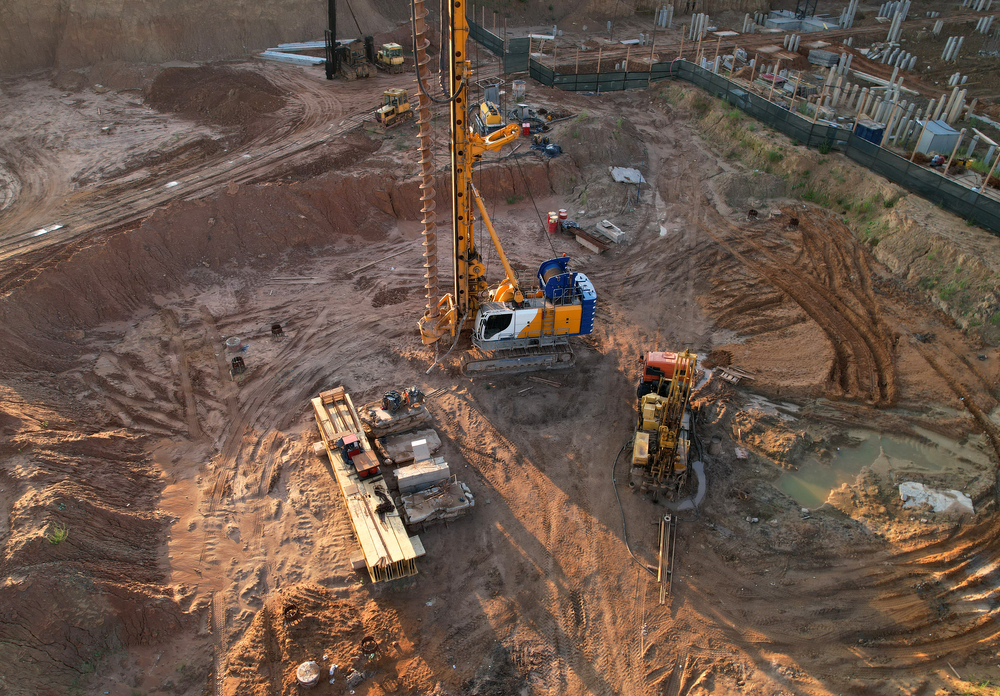7 Easy Facts About Geotheta Described
7 Easy Facts About Geotheta Described
Blog Article
6 Easy Facts About Geotheta Explained
Table of ContentsExcitement About GeothetaSome Known Questions About Geotheta.Rumored Buzz on GeothetaSome Known Questions About Geotheta.The Facts About Geotheta Revealed

They perform site examinations, gather examples, perform lab tests, and assess data to review the viability of the ground for construction jobs - Consulting Engineers. Based on their findings, geotechnical engineers supply suggestions for structure layout, slope security, keeping structures, and reduction of geotechnical hazards. They team up with various other experts, such as architects, structural engineers, and building and construction groups, to make certain that geotechnical factors to consider are incorporated right into the general job design and implementation
By examining the habits and buildings of dirt and rock, they can recognize prospective geotechnical risks such as landslides, dirt negotiation, or slope instability. Their expertise helps protect against failings or crashes that could endanger lives and building. Here are some comprehensive responsibilities and duties of a geotechnical designer: Website Investigation: Geotechnical designers conduct site examinations to collect data on subsurface problems.
They translate the information to understand the buildings and actions of the dirt and rock, including their stamina, leaks in the structure, compaction attributes, and groundwater problems. Geotechnical Evaluation and Style: Geotechnical engineers assess the information accumulated during site examinations to analyze the stability and suitability of the site for building projects. They perform geotechnical calculations and modeling to examine aspects such as birthing capacity, negotiation, slope security, side planet pressures, and groundwater circulation.
The 6-Second Trick For Geotheta
Foundation Layout: Geotechnical engineers play a vital function in developing foundations that can securely support the intended framework. They analyze the soil problems and tons requirements to figure out the suitable structure kind, such as shallow structures (e.g., footings), deep structures (e.g (https://www.anyflip.com/homepage/zuylo)., heaps), or specialized strategies like soil enhancement. They take into consideration factors such as negotiation limits, birthing capability, and soil-structure interaction to create optimum foundation designs
They review construction strategies, screen site tasks, and perform area assessments to confirm that the style recommendations are followed. If unpredicted geotechnical problems emerge, they examine the circumstance and provide suggestions for remediation or changes to the design. Risk Analysis and Mitigation: Geotechnical engineers analyze geotechnical dangers and risks related to the job site, such as landslides, liquefaction, or dirt erosion.

Collaboration and Interaction: Geotechnical engineers function carefully with other experts associated with a task, such as architects, structural engineers, and building and construction teams. Reliable communication and cooperation are vital to incorporate geotechnical factors to consider into the overall job design and building and construction process. Geotechnical designers give technological know-how, solution questions, and make sure that geotechnical requirements are fulfilled.
Getting My Geotheta To Work
Below are some kinds of geotechnical designers: Structure Engineer: Foundation designers focus on creating and examining foundations for structures. They examine the soil problems, tons needs, and site attributes to determine the most suitable structure kind and style, such as superficial foundations, deep foundations, or specialized techniques like heap structures.
They review the aspects affecting slope security, such as dirt buildings, groundwater problems, and incline geometry, and establish approaches to avoid slope failures and minimize threats. Earthquake Designer: Quake engineers specialize in examining and making frameworks to hold up against seismic pressures. They analyze the seismic risk of a site, evaluate dirt liquefaction possibility, and create seismic style requirements to ensure the safety and security and strength of frameworks throughout earthquakes.
They execute area screening, gather examples, and examine the gathered data to identify the soil buildings, geologic developments, and groundwater conditions at a site. Geotechnical Instrumentation Engineer: Geotechnical instrumentation designers concentrate on tracking and measuring the actions of soil, rock, and frameworks. They mount and preserve instrumentation systems that monitor elements such as dirt settlement, groundwater degrees, incline activities, and architectural variations to examine performance and give early cautions of prospective concerns.
Not known Factual Statements About Geotheta
They carry out examinations such as triaxial tests, combination examinations, straight shear examinations, and leaks in the structure tests to gather information for geotechnical evaluation and layout. Geosynthetics Engineer: Geosynthetics engineers focus on the style and application of geosynthetic materials, such as geotextiles, geogrids, and geomembranes. They use these materials to enhance soil security, strengthen slopes, offer drain remedies, and control disintegration.
They tend to be investigative people, which implies they're intellectual, reflective, and analytical. They are interested, methodical, reasonable, analytical, and rational. Some of them are likewise social, suggesting they're kind, charitable, cooperative, person, caring, helpful, understanding, tactful, and friendly - Geo Tech Engineering.
In the workplace setting, geotechnical engineers make use of specialized software program tools to perform calculations, develop designs, and analyze information. They prepare records, evaluation project requirements, connect with clients and group members, and coordinate job activities. The workplace setting supplies a helpful atmosphere for study, analysis, and partnership with various other experts involved in the project.
The 10-Minute Rule for Geotheta
They regularly go to task websites to carry out website investigations, evaluate geotechnical problems, and collect data for analysis. These gos to entail taking a trip to different areas, in some cases in remote or tough surfaces. Geotechnical engineers might execute soil tasting, conduct examinations, and monitor building and construction tasks to make sure that the geotechnical aspects of the project are being implemented properly.
Geotechnical designers also function in specialized geotechnical laboratories. In these centers, they conduct experiments, carry out examinations on dirt and rock samples, and examine the design residential properties of the products. Geotechnical lab designers Extra resources function extensively in these environments, handling screening tools, running tools, and taping information. They team up with other lab staff to make sure exact and trusted screening outcomes.
Report this page